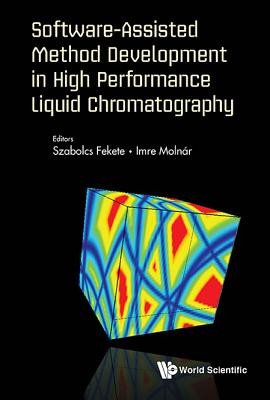
- We will send in 10–14 business days.
- Publisher: World Scientific Publishing Europe Ltd
- Year: 2018
- ISBN-10: 1786345455
- ISBN-13: 9781786345455
- Format: 15.2 x 22.9 x 2.1 cm, kieti viršeliai
- Language: English
- SAVE -10% with code: EXTRA
Software-Assisted Method Development in High Performance Liquid Chromatography (e-book) (used book) | bookbook.eu
Reviews
Description
'The book is a useful contribution in the field of HPLC, and may represent a valuable tool for chromatography practitioners in different fields, as well as teachers and instructors. The 12 chapters provide comprehensive insights of current day retention and resolution modelling in HPLC, and its applications for small and large molecule analysis. It may be a useful reference for specialists in pharmaceuticals but not limited to ... It may be a valuable resource to assist scientists involved in method development, aiming to achieve the best results with reduced costs, time, and efforts.'Analytical and Bioanalytical ChemistryThis handbook gives a general overview of the possibilities in recent developments in chromatographic retention modeling. As a result of the latest developments in modeling software, several new features are now accessible, opening a new level in HPLC method development.Many of these current possibilities in software assisted liquid chromatographic method modeling for analytical purposes are presented. Several modes of chromatography, including Reversed-Phase Liquid Chromatography (RPLC), Ion Exchange Chromatography (IEX), Hydrophobic Interaction Chromatography (HIC), and Hydrophilic Interaction Liquid Chromatography (HILIC) are explained in detail. For all these chromatographic modes, the most important variables for tuning retention and selectivity are exposed.Beside the industrial and practical benefits of retention modeling, the possibilities in teaching and education are also illustrated. Finally, numerous representative industrial examples are shown, to highlight the benefits, time and cost savings offered by state-of-the-art software assisted HPLC method development.
EXTRA 10 % discount with code: EXTRA
The promotion ends in 21d.23:21:22
The discount code is valid when purchasing from 10 €. Discounts do not stack.
- Publisher: World Scientific Publishing Europe Ltd
- Year: 2018
- ISBN-10: 1786345455
- ISBN-13: 9781786345455
- Format: 15.2 x 22.9 x 2.1 cm, kieti viršeliai
- Language: English English
'The book is a useful contribution in the field of HPLC, and may represent a valuable tool for chromatography practitioners in different fields, as well as teachers and instructors. The 12 chapters provide comprehensive insights of current day retention and resolution modelling in HPLC, and its applications for small and large molecule analysis. It may be a useful reference for specialists in pharmaceuticals but not limited to ... It may be a valuable resource to assist scientists involved in method development, aiming to achieve the best results with reduced costs, time, and efforts.'Analytical and Bioanalytical ChemistryThis handbook gives a general overview of the possibilities in recent developments in chromatographic retention modeling. As a result of the latest developments in modeling software, several new features are now accessible, opening a new level in HPLC method development.Many of these current possibilities in software assisted liquid chromatographic method modeling for analytical purposes are presented. Several modes of chromatography, including Reversed-Phase Liquid Chromatography (RPLC), Ion Exchange Chromatography (IEX), Hydrophobic Interaction Chromatography (HIC), and Hydrophilic Interaction Liquid Chromatography (HILIC) are explained in detail. For all these chromatographic modes, the most important variables for tuning retention and selectivity are exposed.Beside the industrial and practical benefits of retention modeling, the possibilities in teaching and education are also illustrated. Finally, numerous representative industrial examples are shown, to highlight the benefits, time and cost savings offered by state-of-the-art software assisted HPLC method development.


Reviews